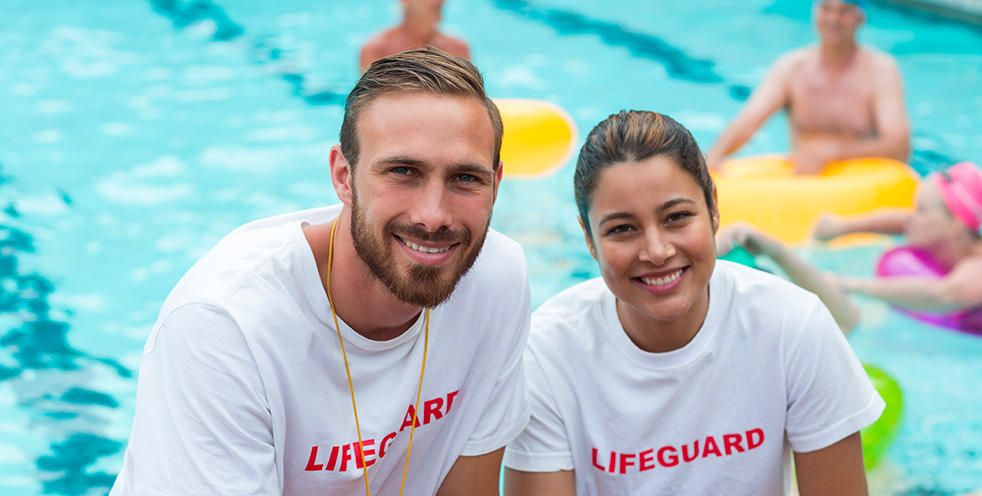
Imagine a sunny day at the beach, families enjoying the waves, and kids building sandcastles. Amidst this idyllic scene, lifeguards stand as vigilant guardians, ensuring everyone’s safety.
Lifeguards are critical in preventing accidents and saving lives, but what does it take to become one? Let’s dive into the world of lifeguard training and see what it involves.
What is Lifeguard Training?
Lifeguard training is a comprehensive program designed to equip individuals with the skills and knowledge necessary to prevent and respond to aquatic emergencies. Organizations like American Lifeguard USA provide this essential training, ensuring that lifeguards are well-prepared for their responsibilities.
Prerequisites for Lifeguard Training
Before you can begin lifeguard training, there are a few prerequisites you need to meet:
Age Requirements
Most lifeguard training programs require participants to be at least 15 years old. This ensures that trainees have the maturity and physical development necessary for the job.
Swimming Proficiency
A strong swimming ability is a must. Prospective lifeguards often have to pass a swimming test, which may include swimming a certain distance within a specified time, treading water, and retrieving objects from the bottom of the pool.
Physical Fitness
Lifeguarding is physically demanding. Trainees need to be in good shape, capable of handling strenuous activities like running, swimming, and lifting.
Components of Lifeguard Training
Lifeguard training comprises three main components: theoretical knowledge, practical skills, and certification in CPR and first aid.
Theoretical Knowledge
Trainees learn about water safety, risk management, and the legal responsibilities of a lifeguard. Understanding these concepts is crucial for making informed decisions during emergencies.
Practical Skills
Hands-on training is vital. Trainees practice rescue techniques, use rescue equipment, and participate in simulated emergencies to prepare for real-life situations.
CPR and First Aid Certification
Knowing how to perform CPR and administer first aid can make the difference between life and death. Lifeguard training includes certification in these critical areas.
Let’s delve deeper into the theoretical aspects of lifeguard training:
Water Safety
Lifeguards must understand the dynamics of water, including tides, currents, and weather conditions. This knowledge helps in anticipating and preventing accidents.
Risk Management
Identifying potential hazards and implementing measures to mitigate them is a key part of a lifeguard’s role. This includes everything from maintaining a clean pool deck to monitoring for dangerous behavior.
Legal Responsibilities
Lifeguards need to be aware of their legal obligations, including liability issues and the importance of accurate incident reporting.
Practical Skills
Practical training is where theory meets action. Here are some core practical skills lifeguards need:
Rescue Techniques
Lifeguards learn various approaches and carries to safely rescue distressed swimmers. Techniques vary depending on the situation and the condition of the victim.
Use of Rescue Equipment
Trainees get hands-on experience with tools like rescue tubes, buoys, and backboards. Knowing how to use this equipment effectively is crucial during rescues.
Simulated Emergencies
To prepare for real-life scenarios, trainees participate in simulated emergencies. This helps build confidence and ensures they can handle high-pressure situations.
CPR and First Aid Certification
Lifeguards are often the first responders in an emergency. Their ability to provide immediate care is vital.
Importance of CPR
Cardiopulmonary resuscitation (CPR) is a lifesaving technique used when someone’s heartbeat or breathing has stopped. Lifeguards must be proficient in CPR to respond quickly and effectively.
First Aid Basics
Basic first aid skills include treating cuts, scrapes, sprains, and other common injuries. Lifeguards also learn how to manage more serious conditions like heatstroke and hypothermia.
Certification Process
Certification typically involves both written and practical exams. Lifeguards must demonstrate their proficiency to earn their certification.
Water Rescue Techniques
Effective water rescue techniques are essential for lifeguards. Here are some key methods:
Approaches and Carries
Lifeguards learn how to approach a distressed swimmer safely and perform carries to bring them to shore or poolside.
Spinal Injury Management
Managing potential spinal injuries requires careful handling to prevent further harm. Lifeguards are trained to use backboards and other equipment for safe extrication.
Surf and Pool Rescues
Rescue techniques differ between environments. Lifeguards are trained for both pool and surf rescues, adapting their methods to the specific conditions they face.
Use of Lifeguard Equipment
Knowing how to use the right equipment can save lives. Here’s a closer look at some essential tools:
Rescue Tubes and Buoys
These floating devices are crucial for providing buoyancy to distressed swimmers and assisting in rescues.
Backboards
Used for immobilizing and safely transporting individuals with suspected spinal injuries, backboards are a staple in lifeguard equipment.
Automated External Defibrillators
AEDs are used to treat sudden cardiac arrest. Lifeguards are trained to use these devices to deliver potentially life-saving shocks to the heart.
Simulated Emergencies
Practical, scenario-based training is a cornerstone of lifeguard education:
Scenario-Based Training
Trainees face various simulated emergencies, from drowning incidents to medical crises. This hands-on approach builds their confidence and decision-making skills.
Team Coordination
Effective rescues often require teamwork. Lifeguards practice coordinating with others to manage complex situations.
Stress Management
Handling emergencies can be stressful. Training includes techniques for managing stress and staying focused under pressure.
Training Duration and Intensity
Lifeguard training programs vary in length and intensity:
Course Length
Programs typically range from a few days to several weeks, depending on the organization and the level of certification.
Training Sessions
Training sessions are often a mix of classroom instruction, pool practice, and simulated scenarios.
Intensity and Difficulty
The training is rigorous, designed to prepare lifeguards for the physical and mental demands of the job.
Certification and Recertification
Becoming a lifeguard involves initial certification and ongoing recertification:
Initial Certification Process
The initial certification includes passing written and practical exams. Trainees must demonstrate their skills and knowledge to earn their certification.
Recertification Requirements
Lifeguards must regularly renew their certification, usually every two years. This ensures they stay up-to-date with the latest techniques and standards.
Continuing Education
Many organizations offer continuing education opportunities, allowing lifeguards to enhance their skills and advance their careers.




